- Home
- / Blog
- / Interior Design
Principles of Lighting Design
02/09/2021
Lighting design not only makes our surroundings visible but sets a higher design goal; to transform our experience and perception of a space. Several studies suggest that light can play an important role in defining our mood and efficiency; not only illuminating a space but creating a healthy atmosphere and ambience. So here is a comprehensive guide that defines lighting design principles known to promote a safe, healthy and comfortable environment.
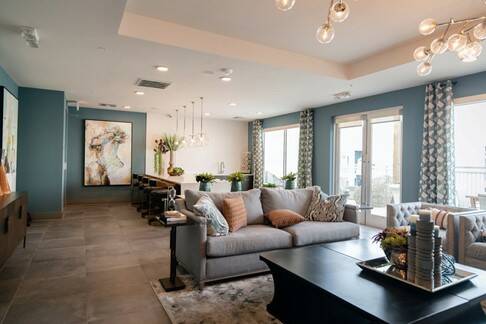
Dynamics of Sunshine
Natural sunlight remains the most efficient source of light known to mankind. Natural light tends to increase productivity in a work environment while having a positive impact on our health and well-being. What makes natural light the most beneficial source? It is the constant play of natural light that tells us we are in the real world; our eyes are drawn to its countless variations. We are biologically attuned to sunlight; our eyes automatically adjust as it brightens and dims, as it makes shadows, as it glistens and gleams on water, as it filters through clouds, foliage, atmosphere, and as it dances with the dust motes while pouring through the window curtains.
Daylight is constantly moving to provide a wide range of color and temperature. Even the intensity and length of shadow varies throughout the day. It is safe to say that sunlight is the most dynamic source of light. In fact, the Impressionist artists often created their paintings as the sun roved across the sky, so their brush strokes and their colors changed in response to record the impression made by changes of light.
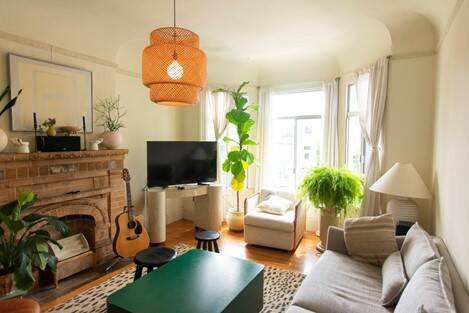
Wholesome Natural Light
Natural light and views of the outdoors not only bring the outside in; they also add immeasurably to our health. Vitamin D beams its way into our skin from the sun's rays, helping us beat the winter blues, also known as seasonal affective disorder. Biologically, we also sleep better when we've had our time in the sun, so much so that sleep hygiene protocols suggest spending more time in the sunlight is part of improving sleeping habits and reduce stress. The more natural light fills our spaces the less we need to rely on artificial light sources, particularly fluorescent, which creates a better ratio of healthy natural light to less healthy artificial light. Architects strive to integrate maximum amounts of daylight into each interior space to enhance and promote a wholesome experience.
When Evening Comes
However, the biggest challenge is to light up space at night. It is certainly difficult to bring all the variation and movement of natural light into your space. So to mimic the dynamics of natural light, it is best to introduce layers of lighting that will define spaces comfortably even in low light conditions. A single layer of lighting to illuminate your space is certainly not enough. The idea is to introduce lighting at different levels for a more appealing and functional interior space throughout the day and the night. Think about introducing contrast in your space to appeal to the human eye and make the comprehension of the space much easier. Thus highlight areas of interest with subdued spaces to attain contrast within the space. So don't stop at a single layer of light, remember it is just the foundation. You need to build upon it for a flexible, functional, well-designed interior space.
Plan for Three Layers of Lighting
Different light fixtures can be divided into three broad categories, Ambient light, Task light and Accent light. Each category plays a unique role in making a multidimensional light space come together. Ambient lighting remains responsible for illuminating the entire space. Like windows, ambient light fixtures produce a soft diffused light that serves as the foundation that helps us navigate through the space. Task lighting on the other hand provides light for a specific purpose or task. The major difference between the two remains that ambient light provides diffused light for an undefined area while task lighting is focused light upon a specific area. Both layers of light are important for a well-functioning interior space.
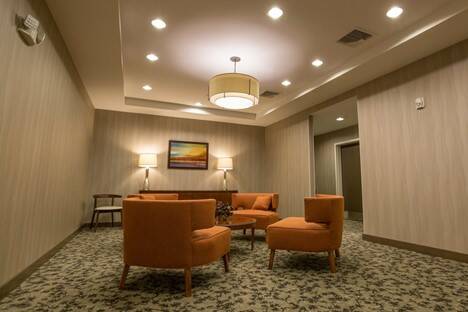
The third layer of lighting is accent lighting. The light can draw immediate attention to the areas of interest within a room, such as artwork or important architectural detail. It remains the most crucial layer in terms of visual aesthetics and ambience of a space. For accent lighting plays a major role in adding depth, variety, and contrast into space. Thus while task lighting focuses upon making the space more functional, accent lighting centers upon a visually appealing space. Lastly, the ambient light provides visual comfort, making it easy for us to coordinate and navigates through space. Therefore each layer of lighting is important for effectively lighting up your space.
Map Pathways & Activity Zones
Visualizing the way people will flow through space and where they will spend time working, relaxing, reading, or playing allows you to imagine where different layers of task, ambient, and accent light will be needed. Mapping these zones out in advance can make it clear where and how to add layers of light into space. So it is advisable to plan ahead and consider each layer of lighting when designing your space. Start by marking your circulation area, activity zones, and points of interest onto the layout of the room. This way it is easy to determine what kind of lighting each area will require. After carefully mapping out the natural pathways and uses of your space your lighting design will naturally blend with the layout of the room, for a highly functional and visually appealing minimalist interior design.

Ambient Light
Ambient light provides general illumination for space. The light offers a general overview of a room so that one can easily navigate through space. So ambient lighting adds a layer of visual comfort to space. Yet it is important that this layer of lighting does not compete with other important light sources in the room. The goal remains to attain a uniform spread of light that maintains a low level of illuminance. Thus ambient lighting must avoid glare and harsh lighting to provide an even distribution, serving as a solid foundation for your lighting design.
Ambient lighting can be achieved through both direct and indirect lighting. Indirect lighting remains one of the most common ways of illuminating a space. It generally employs chandeliers or wall-mounted light fixtures that can direct the maximum amount of light upwards. This light when reflects off a ceiling, resulting in a diffused light perfect for illuminating your space. For this soft lighting can provide an even distribution of light. Thus the greatest advantage of indirect lighting remains the uniform level of illuminance that can spread over the entire space.

Direct lighting remains another source of ambient light. It involves recessed lighting that directs lights downwards. In this case down lighters are placed at a regular interval to achieve a uniform spread of light. Thus recessed lighting is capable of giving orientation and spatial understanding to a space. It generally employs recessed LED lights with minimal focus towards the ceiling. Hence direct lighting is great way to highlight the horizontal surfaces of your space. On the other hand indirect lighting focuses more towards the ceiling and accentuates the boundaries of the space. So it is important to choose lighting fixtures that could easily mimic the overall feel and functionality of your space.
Task Lighting
Task lighting aims to provide adequate light to perform a certain task. Thus the efficiency and functionality of a space remains dependent upon task lighting. Insufficient light can cause added strain on eyes and induce poor health conditions. Thus it is important to get your task lighting correct for a well-functioning space. This can only be achieved through a strong directional beam that concentrates light upon a specific area. Therefore the task lighting should be at least 2 to 3 times stronger than your ambient light. The contrast can soften the distraction in background, allowing you to be more focused and alert. Thus the strong and concentrated task light remains essential in determining the functionality of a space.
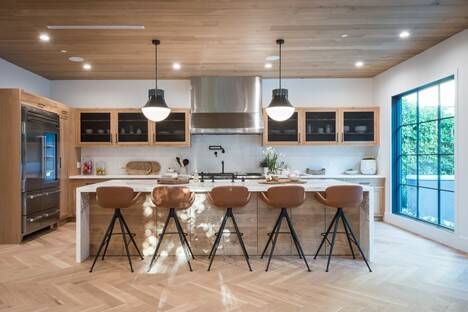
The most popular light source for task lights remains pendants. The fixture can directly hang over a work surface, to provide a strong focused beam of light. Thus pendants lights can work well in highlighting an area of activity. Other common task light sources are lamps that can concentrate maximum light downwards for reading, writing and performing similar tasks, like desk lamps, table lamps, and swing arm reading lamps.
Yet the most dynamic lighting fixture remains track lights. When required the track light can be positioned to direct light towards the desired area. Yet the fixture can double up as ambient light whenever required. Thus remember you have a range of options available for task lighting.
Accent Lighting
Lighting in interior design plays an important role as it can highlight points of interest within a room. Accent light is capable of transforming your experience of artwork or bringing important architectural details into focus. Thus accent lighting plays a major role in adding depth and visual interest to a space. It works by creating contrast within the design of the room. To achieve this it is important that accent light remains the brightest layer of light within a space. The high intensity can automatically appeal our eye, for humans are naturally drawn towards the brightest part of the room. So accent lighting can certainly dictate the first impression of your space.
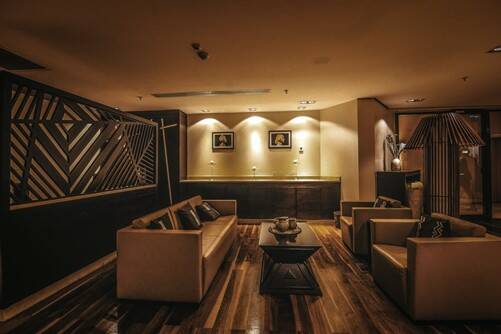
There are no hard and fast rules when it comes to accent lighting. It is about personalizing your space and bringing attention to the areas you love. Today's lighting technology provides a wide range of variety as well as lighting techniques that can help you to achieve the desired effect in an interior space.
When it comes to artwork, it is a great idea to place your lighting fixture above or towards the side. This enables the artwork to stand out from its surroundings. Thus wall mounted direct wire picture lights and track lights with framing projectors and spotlights remain the most popular accent lighting fixtures for every art-centric room.
Interesting architectural details like coffered ceilings, exposed beams, and coves are best highlighted through a concentrated beam of light. The strong light allows for deep shadows that can really accentuate the texture and details. So wall washers remain an efficient way to highlight your architectural details. Yet there are several options that can be used for accent lighting. An emerging field today is landscape lighting. This accent lighting can lend a different aura to your garden and outdoor spaces. Perfectly chosen accent lighting can elevate the aesthetic of both your indoor and outdoor spaces.
Luminaries: Color & Temperature
Light color and temperature greatly impacts the mood of any space and affect the way people feel and function in the space. Common luminaries such as LED lights are available in a wide range of color and temperature. So when installing your light fixtures first considers the function of the space.
.jpg)
Cool Light for Attending
An office or any place where people need to work full time requires a cool light source. Light sources like LED fixtures that produce cool blue-white light help people concentrate. Blue light increases the productivity of functional space.
Warm Light For Relaxing
However in places where you want to relax tones of yellow light create a welcoming and soothing environment. These warm lights are suitable for recreational and residential spaces where the primary goal is to relax. Attending carefully to the color and temperature of luminaries adds cozy warmth and an intimate ambience to your space.

Playfulness & Planning
Functional planning can help you develop a lighting design for a well-lit space that is both functional and visually appealing. It enables us to understand the purpose and potential effect of each light source that we plan on adding to space. Mark, where you will need different layers of lighting early on and decide upon the type of light fixture that can help, attain the desired effect.
Lastly, think about the mood of your space in terms of lighting color, and temperature. To get your electric lighting in place it is important to consult a lighting designer. Consider each aspect of your lighting system from the placement of the switchboard to the design of your lighting fixtures.
Dimmability and Control
Use light control systems and dimming systems whenever available. This way you can attain a greater control over the space. After all the primary focus of lighting design remains to provide a fulfilling and wholesome experience for you.
______________________________________________________________________________________________________________________


